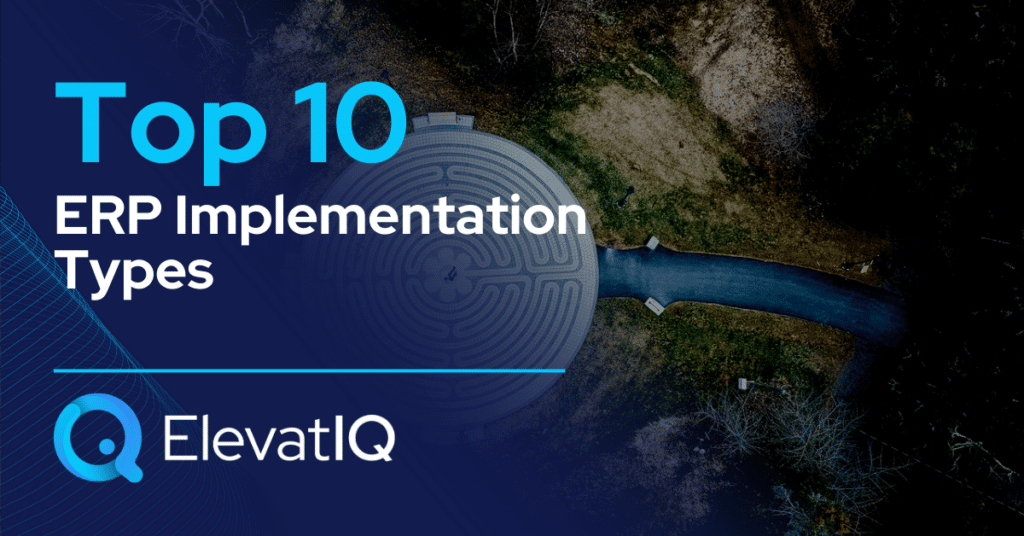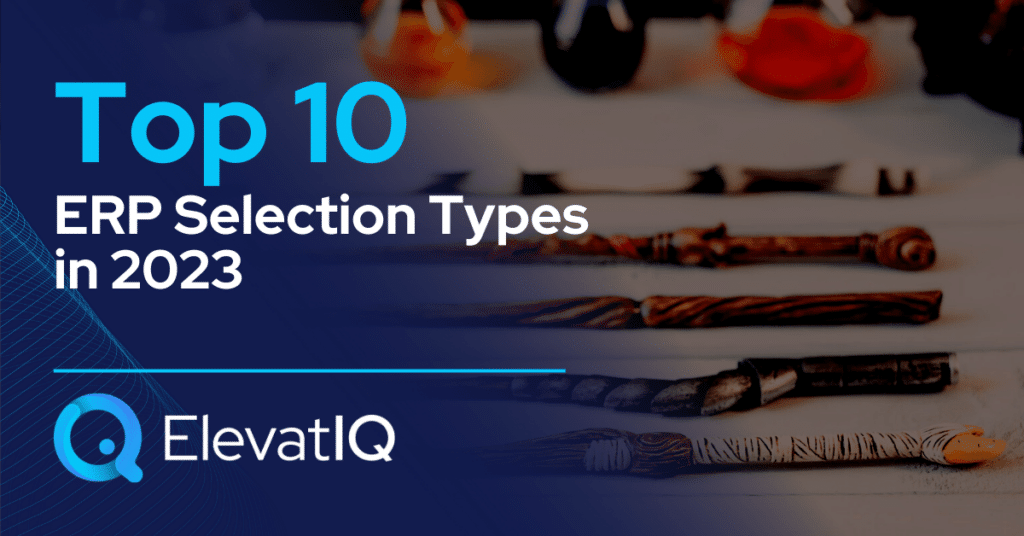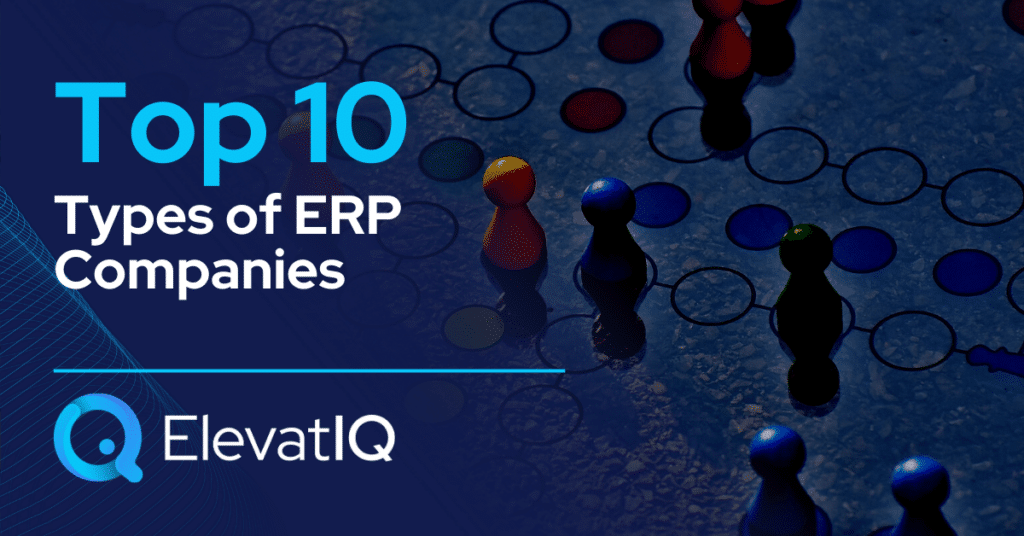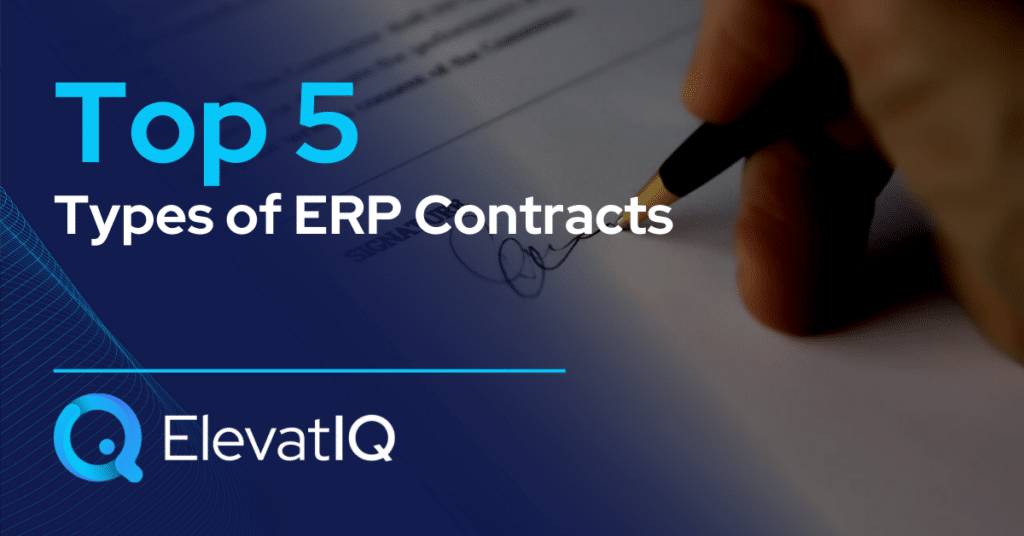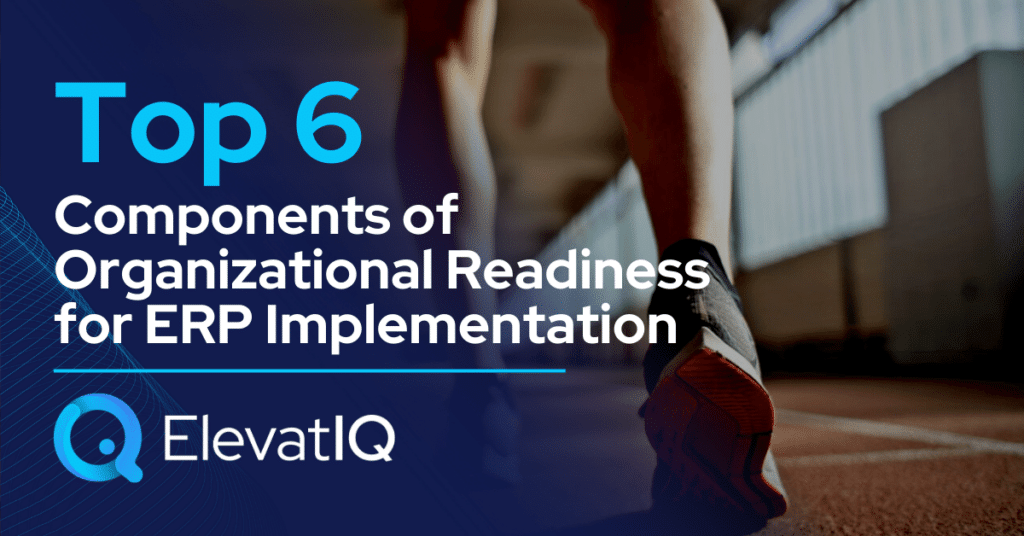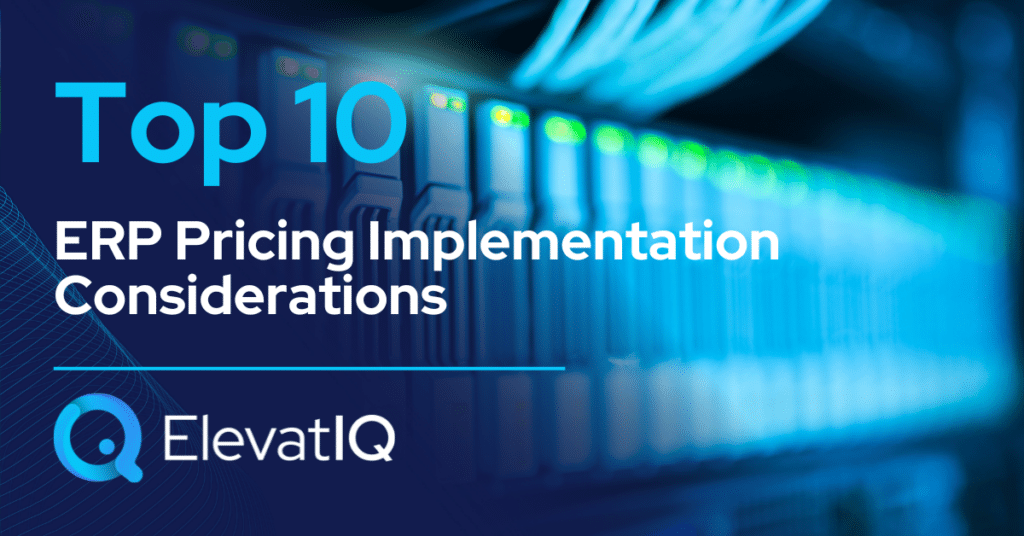Going through an ERP implementation is like heart surgery for your business. And just like with surgeries, everything matters your body type (your business model), your psychological state (the changes in the state of your business with time), doctors (ERP consultants), doctor’s expertise (their skillset and experience), equipment (ERP solution), procedure (implementation approach), and the hospital (your data, processes, and architecture). Most surgeons planning the surgery for the first time go unprepared and end up killing patients. They may have watched other surgeons and might not fully appreciate the craft required to be successful.
Understanding and articulating why they are so challenging requires you to go through multiple surgeries on a daily basis. The same goes for ERP implementations. Luckily, with heart surgeries, we have regulations that help prevent failed surgeries. With ERP implementations, there are none. And that’s why the experience and results vary so much, with only a few lucky ones getting business results and using them as their competitive advantage.

First-time implementors are very similar to first-time surgeons. They underestimate the amount of effort involved and the expertise required. And as SaaS technologies are becoming easier to use, this tendency is only hurting them more. Generally, it takes at least 2-3 implementations in the company’s life cycle to appreciate the whole process and be informed about the efforts required to avoid business disruptions or million-dollar ERP disasters. It might take another 2-3 to achieve tangible financial performance improvement, which is attributed purely to this investment. So, what are the different approaches for ERP implementation?
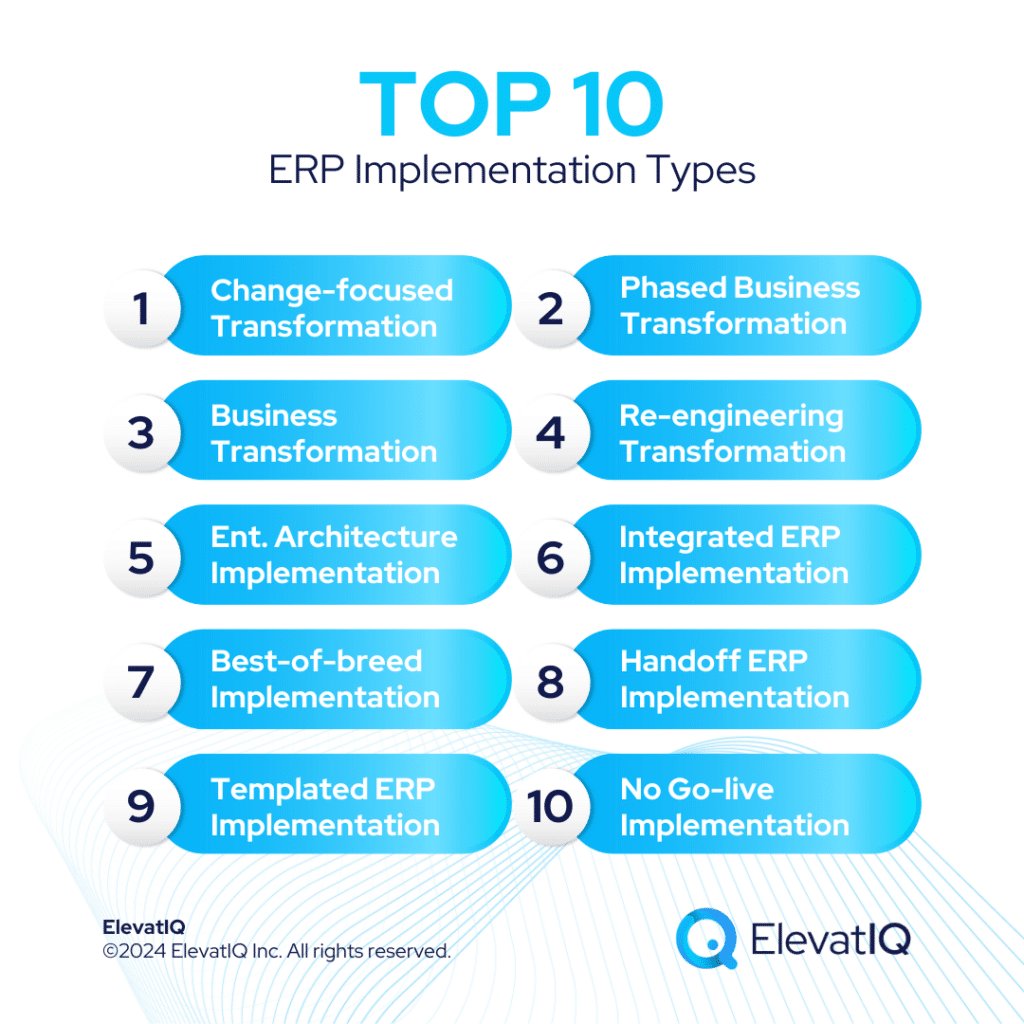
1. Change-focused Phased Business Transformation
This transformation starts with the overarching business strategy or business model changes, including planning for managing the change and the communication plan for employees, customers, and vendors. This initiative is very similar to how you would plan your inventory or operational capacity, starting with the business and annual operating plan, followed by identifying the right KPIs that need to be improved through potential digital initiatives. The process starts with building as-is and to-be process (and data) models, including financial statements and KPIs forecasted for the next 5-10 years.
Depending upon the companies’ budget and skillset, they may manage the entire change and business case process internally while hiring consultants primarily for the subject-matter expertise of enterprise software and ERP. The other companies, on the other hand, may want them to lead the entire project, including strategy and planning, selection, and implementation. The strategy phase of such engagements is likely to be close to 6 months – 2 years, depending upon the size of the organization. The implementation and execution phase could be 2-10 years, with multiple phases managed as part of the global rollout.
Engagement Structure:
It consists of a selection phase with only the selection consulting firms managing the entire process, whereas the implementation phase may involve ERP OEM, ERP resellers, ISVs, and enterprise software vendors.
Pros:
- Complete alignment of corporate strategy with digital execution.
- Superior definition of success.
- Motivated teams due to the end-to-end visibility of goals.
Cons:
- Might be harder for larger organizations to build future financial models.
- Expensive.
- The costs involved with the strategy phase might demotivate executives who might be hoping for quicker returns with digital initiatives.
2. Phased Business Transformation
Unlike the change-focused phase business transformation initiatives, these initiatives might not have formally planned change management activities. Identifying the business priorities from the business and annual operating plans without putting as much emphasis on documenting as-is and to-be process models would be the primary difference. The executives and business teams might drive these initiatives as they might have specific business performance issues or a set of issues that they might be looking to resolve. The structure of these engagements would be similar to the change-focused business transformations, with the primary difference being in the length of the selection phase, which is likely to be shorter, while the implementation phase would be a bit longer.
Engagement Structure:
During the selection phase, typically, only strategy and independent ERP consulting firms would be involved. ERP OEM, ERP resellers, ISVs, and enterprise software vendors might lead the implementation.
Pros:
- Less time spent on discovery.
- Superior definition of success.
- Clear visibility into business goals and KPIs.
Cons:
- Adoption risk issues due to less time spent on discovery and change management.
- Longer implementation time due to the iterations required during the implementation phase.
- The costs involved with the strategy phase might demotivate executives who might be hoping for quicker returns with digital initiatives.

3. Business Transformation
Unlike phased business transformation, in which a substantial amount of time is spent on the overarching corporate strategy before deciding the right phases and planning their sequencing. Business transformation is all about planning for specific ad-hoc issues. Sometimes they are done at the department level, and the other times corporate. The biggest difference in this transformation engagement is that there might be duplicate efforts across the enterprise to solve similar problems. While these initiatives may be successful at the project level, the business might not get the overarching results due to the misalignment of different initiatives.
Engagement Structure:
The engagement structure and the vendors are very similar to the phased business transformation.
Pros:
- Less time spent on discovery.
- Definition of success.
- Visibility into business goals and KPIs.
Cons:
- Questionable success due to the misalignment between corporate goals and execution.
- Adoption risk issues due to less time spent on discovery.
- Longer implementation time due to the iterations required, as well as in aligning the plan with the corporate strategy.

4. Process and Data Re-engineering Transformation
Unlike business transformation-focused transformation, where the deep analysis of the financial and process model is performed of both as-is and to-be, the starting point for these initiatives might not be the business or annual operating plan. And obviously, no KPIs analysis. Specific business challenges, such as outgrowing the current ERP system or reaching an inflection point in the company’s growth journey, are typically the starting point, followed by the rounds of deep process and data re-engineering prior to selecting the technology.
Engagement Structure:
Since these engagements are process and data re-engineering led, independent ERP consultants might take the lead with these projects and be involved during and post-implementation to ensure that the to-be state is successfully implemented.
Pros:
- Process and data re-engineering would increase the chances of successful selection.
- Alignment between users and implementation teams.
- Reduced risk of over-engineering and over-customization.
Cons:
- Questionable success due to the misalignment between corporate goals and execution. Assumed to-be state may result in implementation failure.
- Longer implementation time due to the iterations required to align with the corporate strategy.
5. Enterprise Architecture Implementation
While the entire architecture implementation takes a comprehensive view from the technology standpoint, they might miss the business, process, and data viewpoint. Unlike other implementation types where only one product or area might be in scope, this implementation type considers all the systems in scope, such as ERP, CRM, eCommerce, WMS, TMS, MES, etc. This implementation type would address core technical challenges such as master data governance, reconciliation flows, and data migration.
Engagement Structure:
Since these engagements might be IT-led, they might recruit independent ERP consulting firms for selection, enterprise architecture, 3rd party QA, and managing the program. The ERP OEMs, resellers, and ISVs would be involved during the implementation phase.
Pros:
- Less risk of data siloes due to the enterprise architecture perspective.
- Alignment between enterprise architecture and implementation team.
- Less duplication of code and capabilities across the enterprise.
Cons:
- Questionable success due to the misalignment between corporate goals and execution.
- Assumed to-be state may result in implementation failure.
- Longer implementation time due to the iterations required to align with the corporate strategy.
6. ERP Implementation (Cross-functional Integration)
Unlike the enterprise architecture implementation, this approach takes a siloed perspective on ERP where they might have several initiatives, such as WMS and MES implementation, running in parallel to ERP. The ERP implementation may make assumptions about the master data reconciliation and integration flows. But might not spend as much time on the discovery and planning of the overarching architecture and business transformation, as well as change management at the corporate level.
Engagement Structure:
Since these engagements might be finance- or CFO-led, they might recruit independent ERP consulting firms for selection. The selection is primarily siloed, considering only the ERP-centric workflows and processes. Some selection firms focused only on ERP might not be comfortable engaging during the implementation phase, and the implementation might be led by the ERP OEMs, resellers, and ISVs.
Pros:
- Cheaper
- Faster Implementation
- Great for teams where they might not have control over corporate strategy or enterprise IT.
Cons:
- Significant integration risks
- The risk of admin efforts due to disconnected ledgers and master data
- Missing technical perspective might lead to selection and implementation issues.
7. ERP Implementation (Functional Best-of-breed)
This is probably not an ERP implementation but is often misunderstood. The functional ERP is one of the best-of-breed apps for a specific function such as HCM, CRM, accounting, or eCommerce. While they might be perceived as an ERP, the cross-functional integration is very lean and fragile (and, most often, non-existent), causing significant integration and reconciliation issues across processes and departments.The budget and planning for these initiatives are done at the department level.
Engagement Structure:
Since these engagements are primarily LOB or department-led, such as HR, marketing, or Supply Chain, a selection firm may not be involved. The implementation is primarily siloed, considering only the function-centric workflows, with minimum visibility into cross-functional processes.The CRM, HCM, WMS, TMS, eCommerce OEMs, resellers, and ISVs might lead the implementation, with minimum involvement of the selection and change management consulting firms.
Pros:
- Cheaper
- Faster
- Great for teams where they might not have control over other departments or might need to implement a system for quicker, siloed results.
Cons:
- Significant reconciliation and master data governance risks
- The risk of increased admin efforts due to disconnected ledgers and master data
- Missing cross-functional perspective might lead to selection and implementation issues.
8. Handoff ERP Implementation/Checklist and Data Upload
While often promoted by ERP OEMs and Resellers as an implementation or consulting project, this is really a setup. The responsibilities of the OEM and their reseller are limited to the tool and training provided on the tool. Due to the limited budget planned for these engagements, they will not be able to spend as much time with processes or data engineering. Their answers would be limited to how the tools would handle the processes and their best practices, primarily due to legal compliance issues and their limited understanding of other areas of business transformation. The process would start with filling out a series of checklists and spreadsheets, but you would be responsible for identifying the right GL codings, customer master, SKU normalization, and reconciliation workflows.
Engagement Structure:
With this implementation, the client would engage with the ERP OEMs and resellers directly during the sales process, and the process would start upon signing the ERP contract. The client would manage the implementation directly with their internal resources and work directly with the reseller or OEM. The implementation time may be longer without any prep, but you would be required to pay the license fee from day one.
Pros:
- Cheaper
- Faster
- Ideal for companies with deep internal ERP COE and master data experience
Cons:
- Significant integration risks
- Significant data translation risks due to the gap in understanding of as-is and to-be data models
- Risk of implementation failure due to inadequate process and data reengineering.

9. Templated ERP Implementation
This ERP implementation is often promoted by ERP OEMs and resellers as a quicker implementation approach. Sometimes the price of these implementations could be as low as $30K. These implementation templates are pre-configured with the chart of account mappings, item SKUs, etc., and you are expected to change your business processes and data within the framework of the template. Any deviations would be billed separately. While they sound great on paper, these templates assume that all businesses are alike and that their data, processes, and transactions would be in the exact same state as the other businesses. But unfortunately, every business has its own nuances. And even with process and data re-engineering, the templated approach might not work.
Engagement Structure:
With this implementation, the client would engage with the ERP OEMs and resellers directly during the sales process, and the process would start upon signing the contract. The client would manage the implementation directly with their internal resources and work directly with the reseller or OEM. They might rush to go live but expect substantial disruptions and adoption issues post-implementation, with huge dollars with ERP customizations and support.
Pros:
- Cheaper
- Faster
- Ideal for companies with substantially limited implementation budget
Cons:
- Significant integration risks
- Significant data translation risks due to a gap in understanding of as-is and to-be data models
- Risk of not going live because the users might not feel comfortable going live on templated processes.
10. No Go-live Implementations
Most unplanned and first-time implementation result in not going live and are a complete waste of investment. Regardless of whether you go live or not, you would still spend your time and money with these implementation projects and sometimes be locked in the ERP contract as well, even though you were not able to use the software at all. The main cause of this implementation failure is overcommitment and misunderstanding during the sales process.
The misunderstanding could be because of any reason, whether you forgot to share crucial details during the sales process or the reseller or OEM couldn’t spend much time and overcommitted. While cheapest on the surface, these implementation projects might turn out to be the most expensive of all due to unproven capabilities, overengineering of the solutions, or poor data driving substantial process issues. Inexperienced clients might not have enough experience in vetting vendors’ capabilities. The vendors might overcommit because of poor discovery or pressure to close sales.
Engagement Structure:
With this implementation, the client would engage with the ERP OEMs and resellers directly during the sales process, and the process would start upon signing the contract without the involvement of an independent ERP selection Or change management consultant.
Pros:
- Cheaper
- Faster
- Ideal for companies who can afford to lose their investment with R&D.
Cons:
- Significantly over budget
- Total waste of time and money
- Business Disruptions
Final Words
While it’s always critical to undertake the implementation type that suits your budget and goals, try to understand the different options available and their implications for your business. Choosing a templated approach is almost similar to productizing heart surgeries, assuming all hearts and bodies are the same. And this mindset may end up costing way more than what you might save on the surface.
So if your goal is to get business value from an ERP implementation, talk to an independent ERP consultant who can guide you through the process and walk you through the pros and cons of the various options available. But most importantly, run away from people who might claim that ERP implementation is easy.


